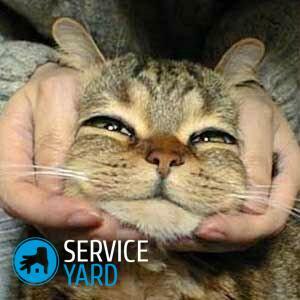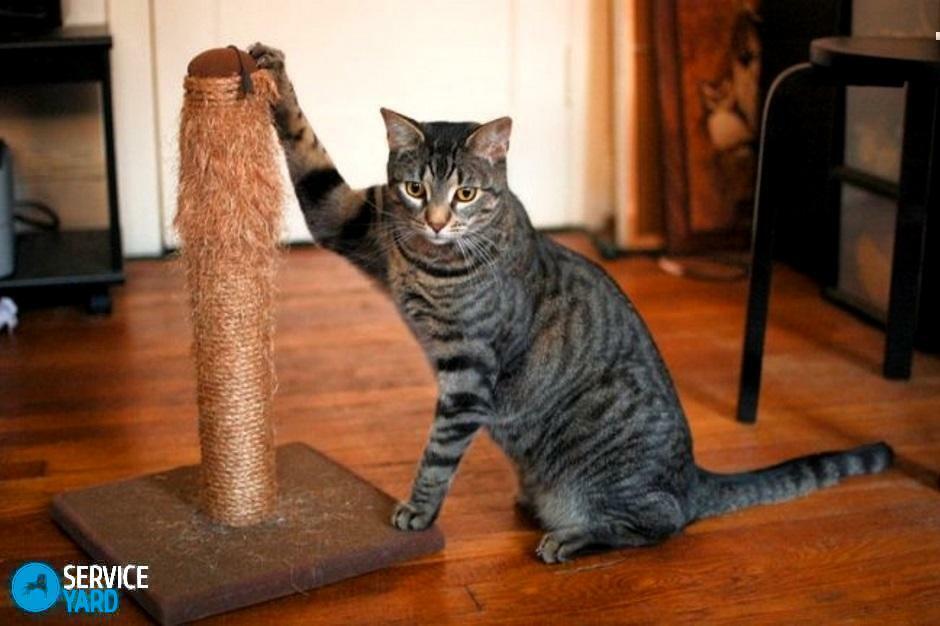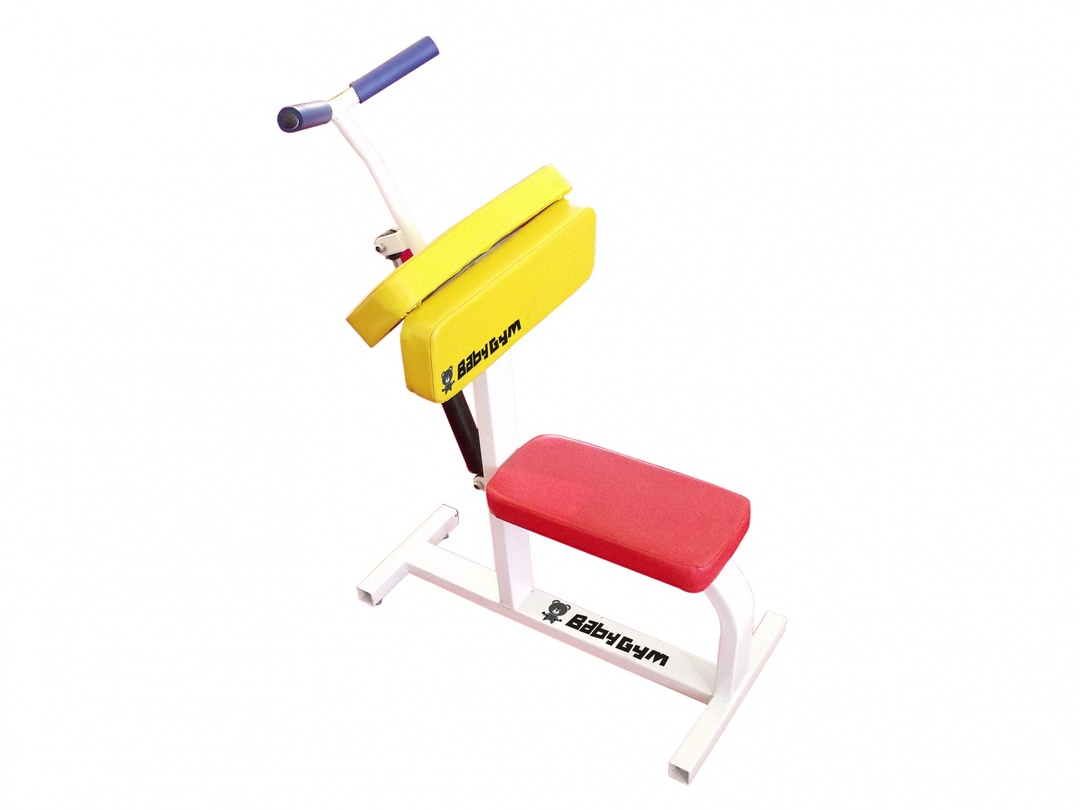
- Reasons for
- Removing the causes of
- Recommendations
Home pets bring joy and coziness to our home, but it happens that along with the joy in our apartment there is chaos. Most owners faced with the question, what to do, so that the cat does not tear the wallpaper? Is it possible to fight against this or do we have to accept it? Let's try to understand.
to content ↑Reasons for
The first thing that the owner of an animal needs to do is to understand the reason for this behavior. It is the rightly identified reason that will help build a plan for what to do if the cat is cutting the wallpaper.
Important! Cats, though pets, but originally released from wild animals. And their behavior is largely due to the habits left by their older brethren. Including the habit of sharpening claws about any convenient thing.
In the forest, animals do this about the surface of trees, but at home pets have to look for more sophisticated options. And often their choice falls on furniture or walls.
Let us dwell in more detail on the reasons for this behavior.
Stress
If the pet is in a stressful condition, then he can shoot it so unpleasant for the hosts way. It is possible that there is another animal nearby, or something went wrong in its usual routine. And nearby - does not mean in the same room.
Important! Cats have a very sensitive sense of smell, and perhaps one of your neighbors has a pet, and your cat decided that its territory is in danger.
Remember - maybe you moved furniture or made repairs, or maybe just changed the lighting to a brighter. Also, foreign smells can become the object of the animal's stress.
Important! If a cat does not like something, it will start to mark the territory, including in this way. Under the cushions of cats, there are special glands that give out the secret used to show who is in this area the main one.
Instinct
Of course, do not forget about the natural needs of the animal to sharpen the claws, because their surface eventually dies, and it must be sewn to allow the growth of new claws.
Also, a small animal's workout is designed in this way. Sharpen the claws and stretch the muscles for the cats in the order of things.
Education
Another option, when the owners do not understand what to do if the cat is cutting the wallpaper, but at the same time he has a scratching stick - the wrong behavior of the owners. Animal needs to know exactly where it is possible, and where it is impossible to sharpen claws.
Important! If you know exactly why a pet behaves this way, then it will be much easier to fight the consequences.
to content ↑Removing the causes of
Consider ways to solve the problem when the cat scratches the wallpaper. What to do and how to avoid it.
Smell
To scare an animal off the wrong places will help unpleasant smells for it. Strangely enough, it is a pleasant citrus smell for a person:
- You can leave a lemon or orange peel next to your favorite place.
- Instead of citrus peel, you can use their oils, which should be applied to the wall.
- There is also a possibility to use special sprays from pet stores, which often do not smell for a person, but are unpleasant for an animal.
Important! This method can act in individual cases, but it does not eliminate the cause of the behavior. Therefore, most likely, the animal will just find a new place.

Kid If the pet does not have a specific place, he will find himself any convenient object and will sharpen the claws about him. Therefore, the first thing that owners need to do is to provide a cat with a scratching pad. You can make it yourself, or purchase a ready-made version in a pet store.
In this case, the animal must be taught how to use it.
Important! You can install a new object to where the animal usually cuts the wallpaper, give the pet a habit of getting used to the new toy, and gradually move it to the place you need.
When buying or creating an individual, pay special attention to the height of the product:
- The animal must fully extend to its full height.
- Also a good solution is to use materials that like to scratch your pet.
- Despite the height, the scratch should be stable, otherwise - the animal can be frightened of it.
- For greater stability, the claw can be fixed additionally.
For accustoming a cat to a new object, you can hang toys on it with cat's mint or other favorite smells of your pet.
Education
When we take the kitten into the house, we are responsible not only for it to be full and well-being. We are responsible for his upbringing. Of course, it is much easier for a small kitten to explain what is possible and what is not allowed. With an adult animal, problems can arise, especially if you need to understand what to do so that the cat does not tear the wallpaper.
Important! You can not beat or use force against the animal, as this will put it in a state of stress and only aggravate the situation.
What can I do:
- For educational purposes, you can scare the animal off the wallpaper, catch it at the scene of the crime with a spray gun, or stick a two-sided adhesive tape on the wall. When a pet habitually starts to tear the wallpaper, it meets an unpleasant sticky surface.
- It's possible that the animal is simply bored without games. As soon as you notice that the cat is going to the favorite wall - distract her with her favorite toys, stroke and communicate with her.
- As educational measures still use special overhead claws - anti-scratch, which are glued to the animal on his native claws. The glue that comes with the kit will not hurt the animal, even if it decides to chew it. The procedure is not recommended to conduct independently, but it is easily handled by any veterinarian.
- A loud sound, such as clapping your hands, will also scare the pet away.
Important! Usually, educational measures act on the animal, but it takes time to instill a habit, for which encroachments on walls are not ruled out. Therefore, as a supplement to education, protective measures can be used.
Protection
To protect the walls from encroachments a temporary shield of plastic or special wallpaper with enhanced protection from pets will help. Let's look at the details:
- Some super-strong wallpaper, of course, can not be found. But you can come to the aid of liquid wallpaper, which due to its smoothness does not allow the animal to catch on to them.
- Also a good choice for owners will be wallpaper based on vinyl or glass fabric wallpaper. They are quite resistant and durable for this kind of mechanical damage, they are also easy to clean: they can be wiped with a damp sponge or, if desired, repainted.
- Another type of material - decorative plaster or artificial stone. They are very hard and unpleasant to scratch, so, most likely, the animal, even if it tries, will soon abandon this venture.
- chipboard panel. Even if the pet manages to damage a durable coating, replacing one panel will not seriously damage your budget.
Important! To cover the floor, owners should also choose strong coating options: linoleum with reinforced protection, laminate or ceramic tiles.
In case of severe damage to the wall cover, you will have to think over how to decorate the damaged part of the wall. There is also an option to adapt to the interests of the cat and seal the damage with carpet or other coating that the animal can scratch without compromising the interior.
to the contents ↑Recommendations
The process of raising a cat is very laborious for the owners, but if you approach it with attention, then it will definitely bring results. There are nuances in this process that should be remembered for any owner, so that the cat does not tear the wallpaper:
- Do not cut your claws on your own if you do it wrong - you can cause injury to the pet.
- If the animal already has a scratching plug, but you decided to replace it - remember that you do not need to throw out the old thing at once. The cat does not immediately get used to the new object, and if there is no replacement, it can start scratching the walls.
- When spraying, do not spray the animal very much, do not hit the muzzle and ears.
If you have a problem with the fact that the pet starts to scratch the wallpaper, do not panic, you need to find out the reason and start acting. Perhaps, the above methods will help you, or maybe you will come up with your own variant. The main thing is not to use force and approach the problem with attention.


